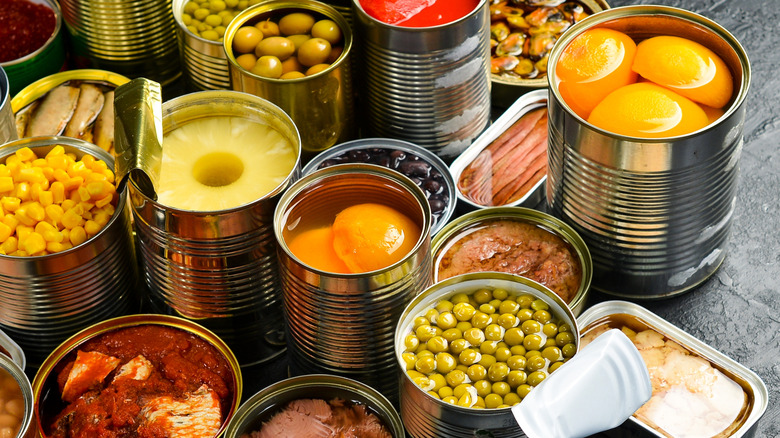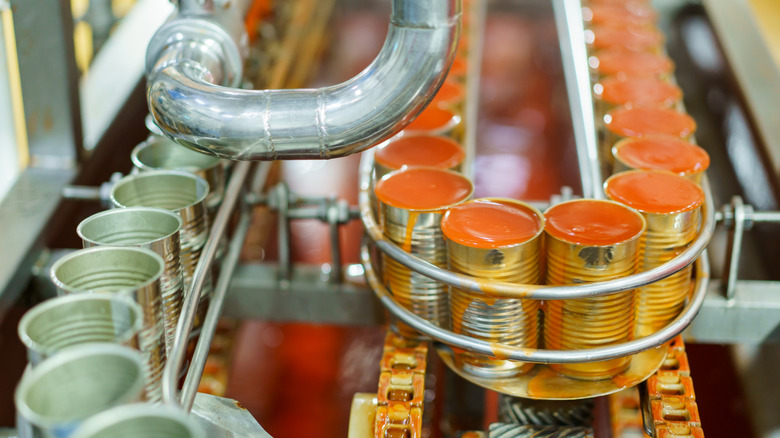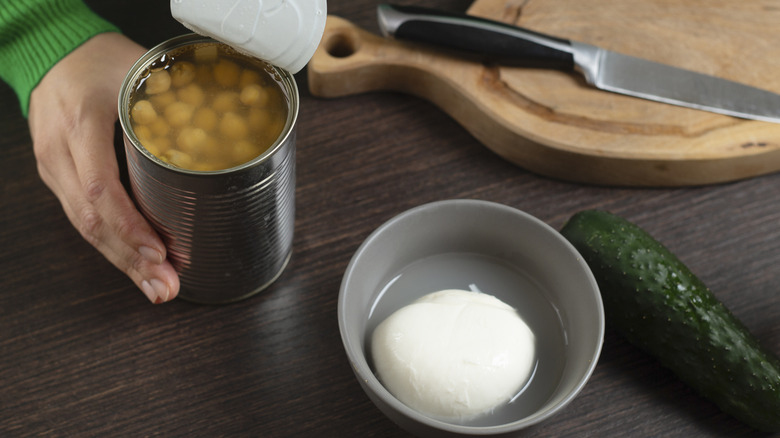Why All Canned Foods Are Actually Processed Foods

On the shelf, canned beans, tomatoes, and corn look as straightforward as food gets, just a single familiar ingredient and little more. In a world of ultra-processed snacks and engineered meals, it's tempting to think some canned foods are unprocessed, as if what's inside the can is the same as what you'd find at a farmers' market , pulled straight from the dirt and just preserved for later. But even the simplest canned foods are, by definition, processed.
It's easy to hear "processed" and think only of unhealthy junk food, but processing isn't automatically a negative, particularly when it comes to canning. The process is exactly what extends shelf life and reduces food waste. It can even improve the nutritional value of some foods. In food science, processing just means anything done to a food after it's harvested: All that washing, peeling, chopping, cooking, or preserving that makes raw food edible, and preservable.
The canning process starts with sorting and cleaning, then peeling, trimming, or chopping. For tomatoes, it means scalding and removing skins. For beans, it's soaking and precooking. Even canned fruit usually gets peeled, sliced, and sometimes blanched before canning. Once the ingredients are prepared, they're packed into cans, topped with liquid (sometimes just water or juice), sealed, and then heated to high temperatures to kill bacteria and make the food shelf-stable.
Read more: The 15 Absolute Best Canned Foods To Stock Your Pantry
What Happens To Foods In The Can

Canning is about more than just dropping food in a metal container and sealing it up. All of the processing steps fundamentally change the food from its original, raw state. Even a basic can of tomatoes or chickpeas has been washed, cooked, and sealed at high heat, all of which changes their chemistry and nutrient profile, and none of which happens to fresh vegetables, meat, fish, or fruit. So while some canned foods are minimally processed compared to others, calling them unprocessed isn't correct. Processing is what makes canned food safe, convenient, and long-lasting.
The most important step comes after the cans of food are sealed. They're heated to a high temperature, usually under pressure, in a process called retort canning. This heating destroys bacteria, molds, and other microbes that could spoil the food, and inactivates enzymes that would otherwise cause changes in flavor, texture, or color over time. The combination of heat and airtight sealing is what makes canned food shelf-stable for months or years.
But this heat also changes the food. Textures soften, colors shift, and some nutrients like vitamin C may decrease, while others become more available, like lycopene in canned tomatoes. The end result is a food that's different from its fresh counterpart: Safe to store, often softer in texture, and sometimes richer in flavor. Of course, there's a big difference between minimally processed foods like whole canned tomatoes or beans, and more highly processed products like canned soups or meals , but even the most basic canned foods are the result of careful, controlled processing.
The Healthiest Vegetable Is The One You Eat

Nutrition researchers use terms like whole foods, minimally processed foods, and ultra-processed foods to describe how far a food has traveled from its original form. Whole foods, like raw fruits and vegetables, are closest to their natural state. Minimally processed foods include products like canned beans, frozen vegetables, or washed salad greens; which have been prepared for safety or convenience, but the added-ingredient list is short and still recognizable. Ultra-processed foods are a different category: Packaged snacks, sweetened cereals , and shelf-stable meals full of additives, flavorings, preservatives, and other highly refined ingredients.
Most canned foods fall in the minimally processed middle. A can of single-ingredient vegetables like green beans is a world away from cheese spread or canned ravioli, even if both come in a can. The main difference is what's added, and how much the food has transformed from its original shape.
Nutritionally, all forms of vegetables have benefits. Fresh offers peak flavor, but frozen and canned can preserve nutrients very well, especially if fresh produce spends days in transport or storage. For canned foods, the most important thing to watch out for is what's added: Check labels and opt for versions with just water, maybe a little salt, and skip or use less of those packed in syrup or heavy sauce. The healthiest choice is whatever gets you eating more real food, particularly fruit and vegetables. If canned vegetables or tuna help you make a quick meal , that's a win. Don't chase an unprocessed ideal, just focus on making practical, informed choices that fit your life.
Read the original article on Tasting Table .
Post a Comment for "Why All Canned Foods Are Actually Processed Foods"
Post a Comment